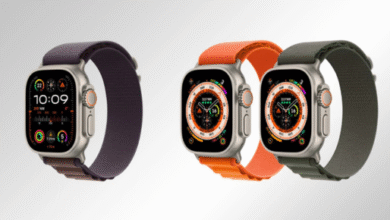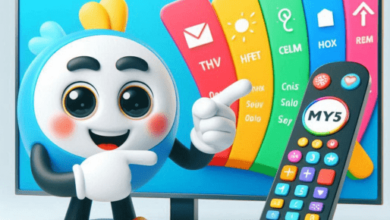The Future of Wearable Technology in Enhancing Productivity

Wearable technology’s no longer just a buzzword; it’s rapidly transforming how we work and live. From smartwatches that track our health to augmented reality glasses that enhance our tasks, these gadgets are becoming indispensable tools in boosting productivity. As someone who’s always on the lookout for ways to streamline my workflow, I’ve noticed that wearables are making a significant impact.
Imagine having a device that not only monitors your physical activity but also integrates seamlessly with your work environment, providing real-time data and insights. This isn’t science fiction—it’s the future of wearable tech. In this article, I’ll explore how these innovations are set to revolutionize productivity, much like how custom chef knives revolutionize culinary experiences, making our professional lives more efficient and connected.
The Evolution of Wearable Technology
Wearable technology has undergone significant advancements since its inception. Early devices like simple pedometers and heart rate monitors set the stage for the sophisticated gadgets we use today. These early models, while basic, were revolutionary in providing users insight into their physical activities.
In the mid-2010s, the introduction of smartwatches and fitness trackers saw a leap in functionality. Companies like Fitbit and Apple transformed wearables into multifunctional devices, integrating GPS, sleep tracking, and smartphone connectivity. These features enriched users’ lives by making health metrics easily accessible and actionable.
The latest generation of wearables includes augmented reality (AR) glasses and advanced health monitors. AR glasses, developed by companies like Google and Microsoft, enable users to interact with their environment in groundbreaking ways. Professionals can overlay digital information onto physical spaces, streamlining workflows and improving decision-making.
Moreover, medical-grade health monitors embedded in wearables provide real-time health data. Devices can now measure blood oxygen levels, ECG, and stress, pushing the boundaries of personal health management. This evolution from simple activity tracking to comprehensive health monitoring signifies a major shift in how we perceive and use wearable technology.
This continuous evolution focuses on enhancing productivity and improving user experience. As technology advances, wearables get more integrated into daily routines, proving indispensable in professional and personal contexts.
Key Innovations in Wearable Technology
Wearable technology is continuously evolving, significantly enhancing productivity. The latest advancements include smartwatches, smart glasses, health monitors, and work-specific wearables.
Smartwatches and Fitness Trackers
Smartwatches and fitness trackers now offer features far beyond basic step counting. These devices integrate advanced sensors that monitor heart rate, sleep quality, and stress levels. For example, the Apple Watch Series 8 and Fitbit Charge 5 provide ECG, SpO2, and skin temperature readings. These capabilities offer users in-depth health analytics, empowering them to make informed lifestyle choices, boosting both productivity and overall well-being.
Smart Glasses and Augmented Reality
Smart glasses such as Google Glass Enterprise Edition and Microsoft HoloLens provide augmented reality (AR) experiences tailored for professional use. These devices overlay digital information onto the real world, streamlining tasks and facilitating remote collaboration. For instance, in manufacturing, workers can receive step-by-step assembly instructions directly in their line of sight, reducing errors and improving efficiency. AR glasses also enable virtual meetings and training sessions, enhancing communication and productivity in various industries.
Wearable Health Monitors
Wearable health monitors deliver medical-grade data in real-time. Devices like the BioBeat medical watch and the Oura Ring provide continuous monitoring of vital signs, including blood pressure, respiratory rate, and body temperature. These monitors support early detection of potential health issues, allowing for timely interventions. By maintaining optimal health, users can sustain high productivity levels without disruptions due to health-related concerns.
Wearable Work Devices
Wearable work devices are designed to improve workplace productivity. Examples include the ProGlove smart glove and the EksoVest exoskeleton. ProGlove integrates barcode scanning into a wearable glove, speeding up inventory management and logistics operations. The EksoVest supports the upper body, reducing fatigue and injury risk for workers engaged in repetitive tasks or heavy lifting. These innovations enhance efficiency and worker safety, leading to a more productive work environment.
Wearable technology’s rapid advancements continue to transform how individuals manage their health and work, driving productivity to new heights.
Impact on Workplace Productivity
Wearable technology profoundly affects productivity in various ways. Let’s explore how these innovations enhance time management, health, communication, and data analysis.
Time Management and Efficiency
Wearable devices, including smartwatches and fitness trackers, streamline time management. These devices send reminders for meetings, track task completion, and even monitor breaks to ensure optimal productivity. Smartglasses equipped with AR capabilities can provide real-time instructions, reducing downtime and improving task accuracy.
Health and Well-being
Wearables like health monitors and fitness trackers play a crucial role in employee well-being. They track vital signs, sleep patterns, and activity levels, offering insights for healthier lifestyle choices. Early detection of health issues through continuous monitoring leads to fewer sick days, contributing to a more productive workforce.
Enhanced Communication
Communication within teams improves significantly with wearables. Smartwatches and glasses enable quick alerts and hands-free interaction, reducing the time spent checking phones or computers. Devices like the ProGlove smart glove support seamless information flow between employees and systems, enhancing real-time decision-making.
Data Collection and Analysis
Wearables generate valuable data for organizations. Devices collect data on employee movement, health, and task performance. These insights help companies optimize workspaces, tailor wellness programs, and enhance overall productivity. Advanced analytics on this data provide actionable strategies for continuous improvement.
Wearable technology’s impact on workplace productivity encompasses efficiency, health, communication, and data-driven insights, proving to be a game-changer in modern work environments.
Challenges and Considerations
Wearable technology offers many benefits, but challenges and considerations must be addressed to ensure successful implementation and adoption.
Privacy Concerns
With wearables collecting personal data, privacy concerns arise. Hackers may target devices, compromising sensitive information. Users need clear data usage policies, ensuring transparency. Companies should implement robust security measures to protect data from breaches.
Technical Limitations
Wearable devices still face technical limitations. Battery life often falls short, requiring frequent recharging. Limited processing power restricts functionality, making it essential to improve hardware design. Connectivity issues also pose challenges, especially in environments with poor network coverage.
Adoption Barriers
Adoption barriers prevent widespread use. High costs deter small businesses from investing in wearables. Lack of standardization across devices complicates integration with existing systems. User resistance, due to unfamiliarity or skepticism, also hampers adoption efforts. Companies must address these barriers through education and cost-effective solutions.
The Future Landscape
Wearable technology’s future promises groundbreaking advancements that will revolutionize productivity. Key developments will shape how we interact with these devices and integrate them into our daily routines.
Emerging Technologies
New technologies will drive the next wave of wearables, enhancing their features and usability. Flexible and stretchable electronics will allow wearables to be more comfortable and versatile. For instance, smart fabrics could monitor vital signs seamlessly. Advances in AI will enable wearables to provide real-time insights and predictive analytics, while energy-efficient materials will extend battery life significantly.
Integration with Other Tools
Wearables will integrate smoothly with existing productivity tools, creating a more cohesive and efficient work environment. Smartwatches and AR glasses will sync with project management software, offering on-the-go updates. Health monitors will link with corporate wellness programs, providing data for personalized health recommendations. This interconnected ecosystem will streamline tasks and reduce the friction between different platforms.
Potential Applications
The applications of future wearables will extend beyond traditional health and fitness domains. In the workplace, wearables will enhance remote collaboration through real-time data sharing and virtual meetings. In manufacturing, smartglasses will guide workers through complex tasks with on-the-spot instructions. In education, augmented reality will provide immersive learning experiences. These applications will collectively drive productivity, innovation, and efficiency across various sectors.
Wearable technology’s evolution will transform productivity by leveraging emerging technologies, better integration with tools, and diverse applications.




